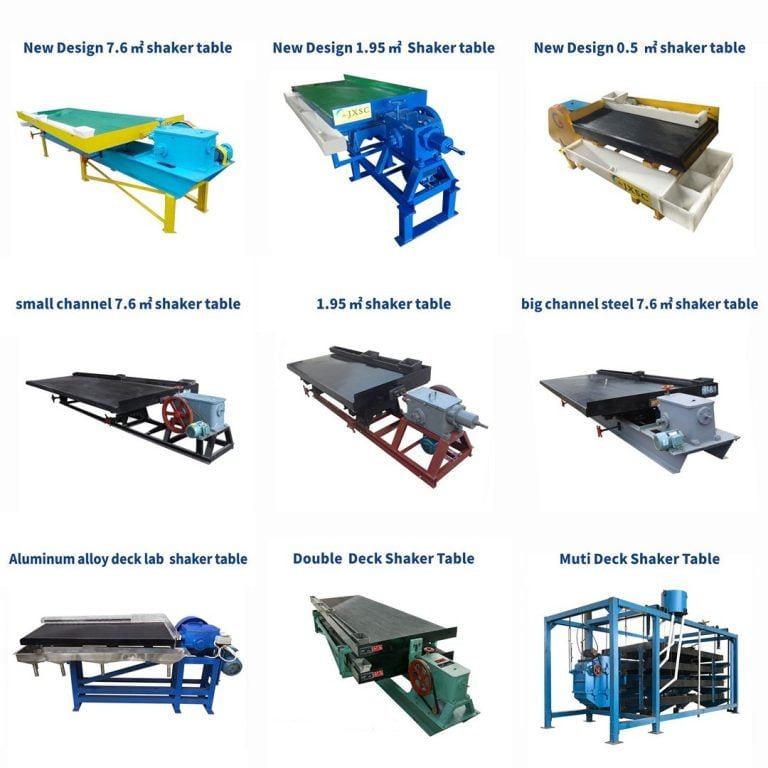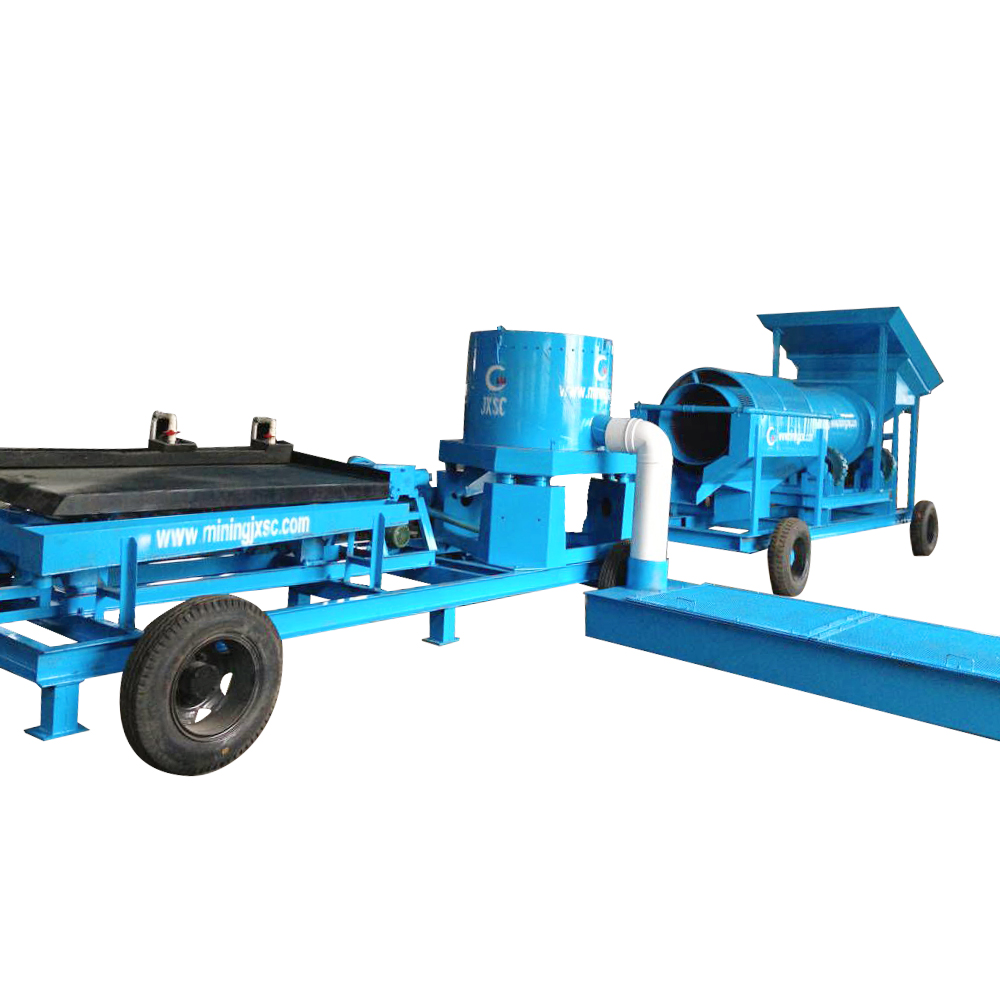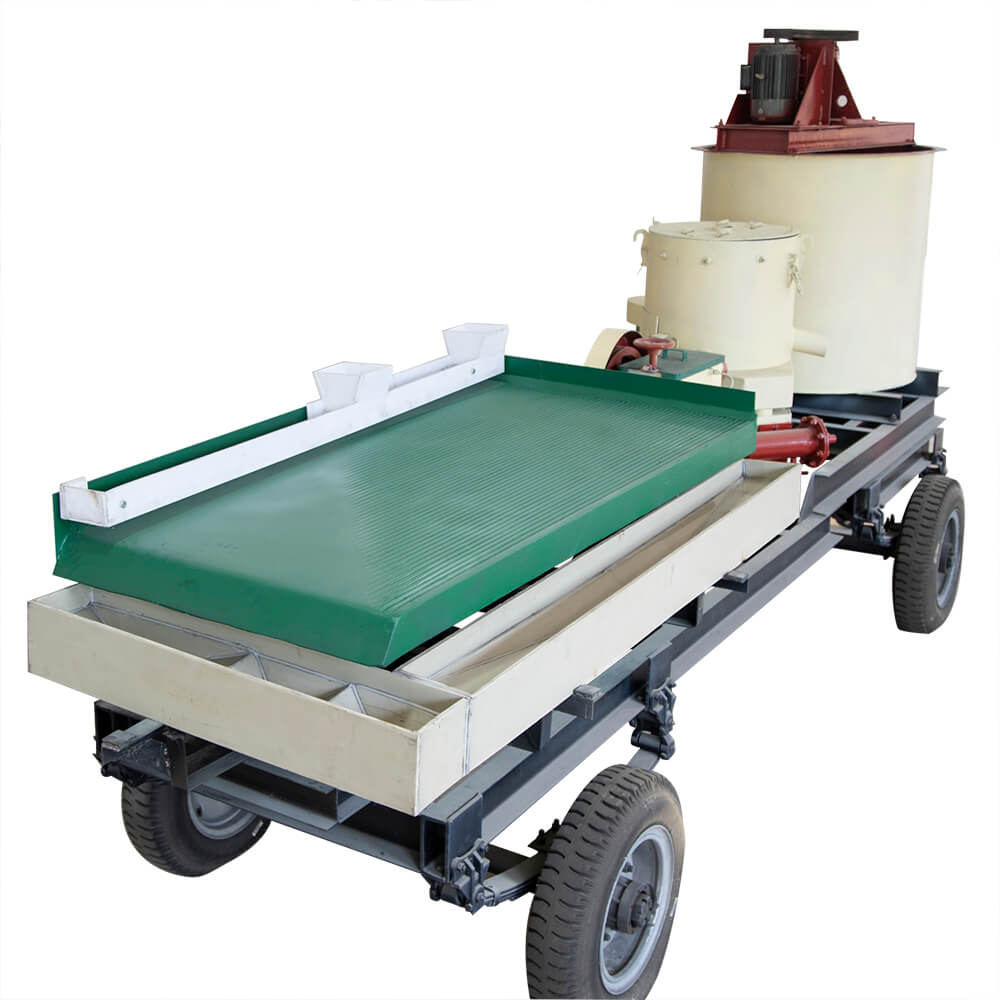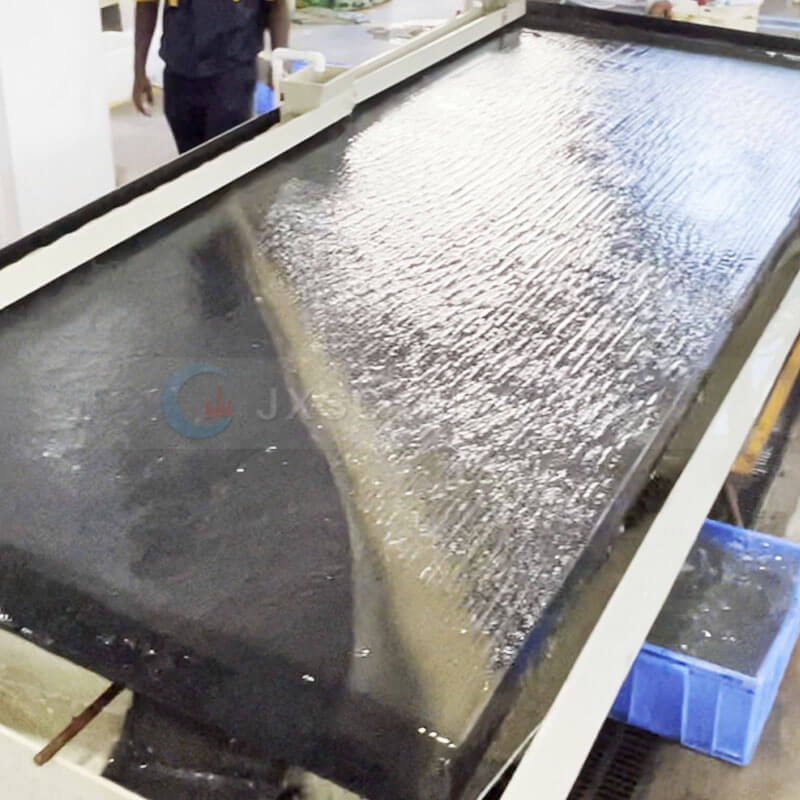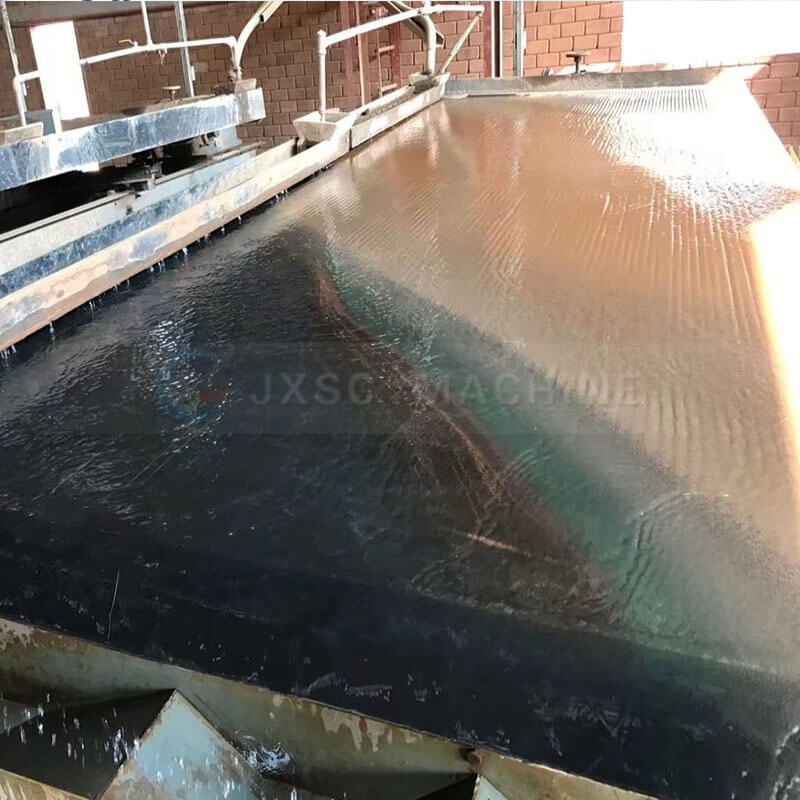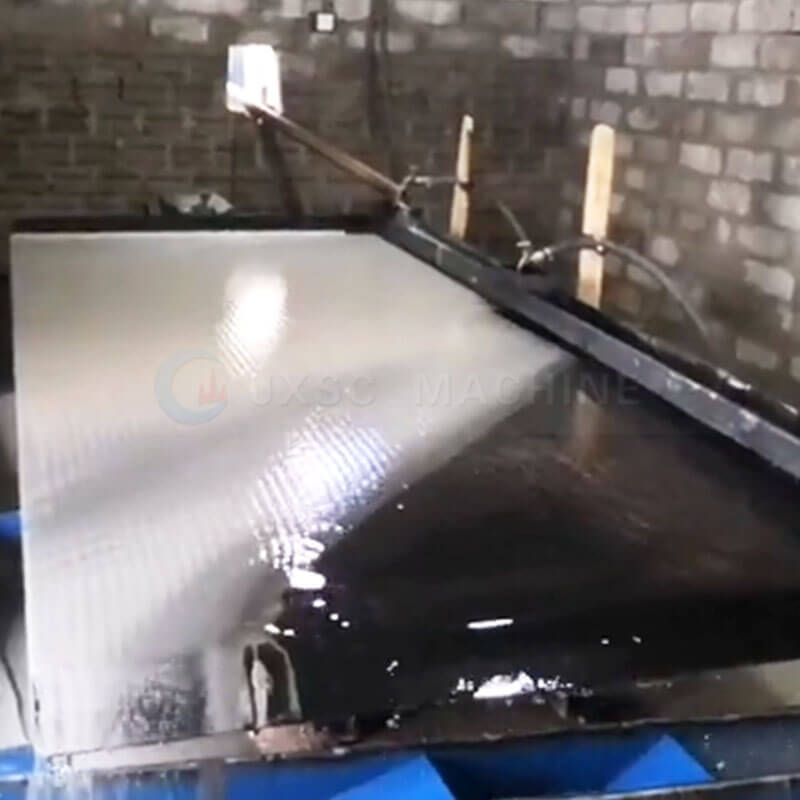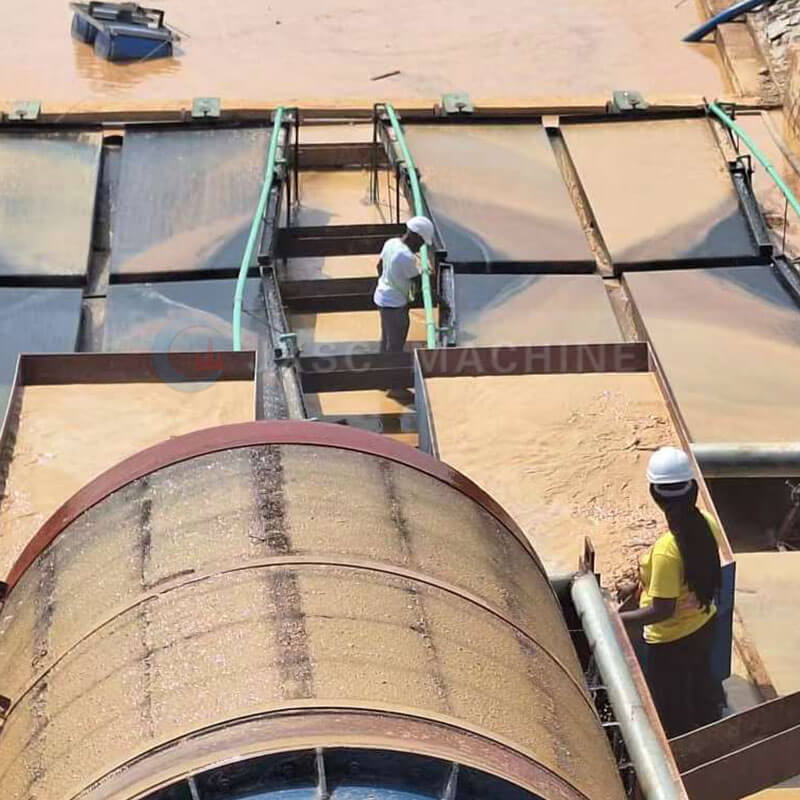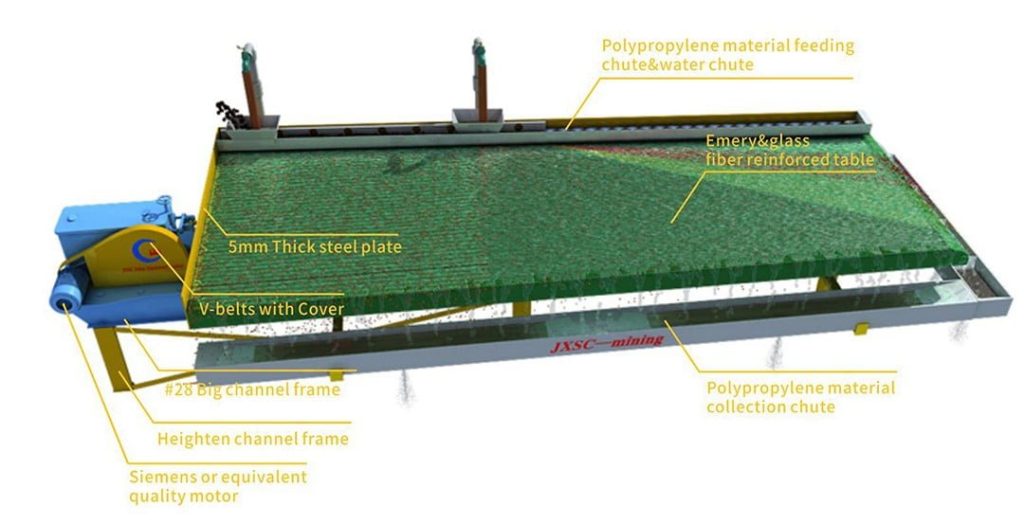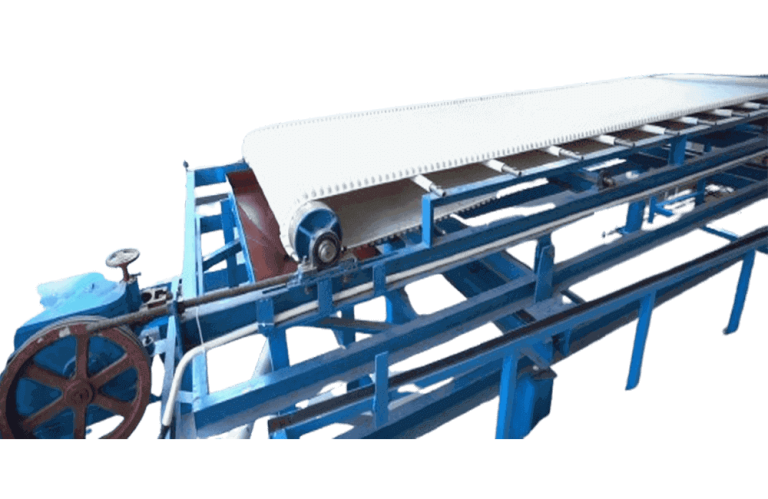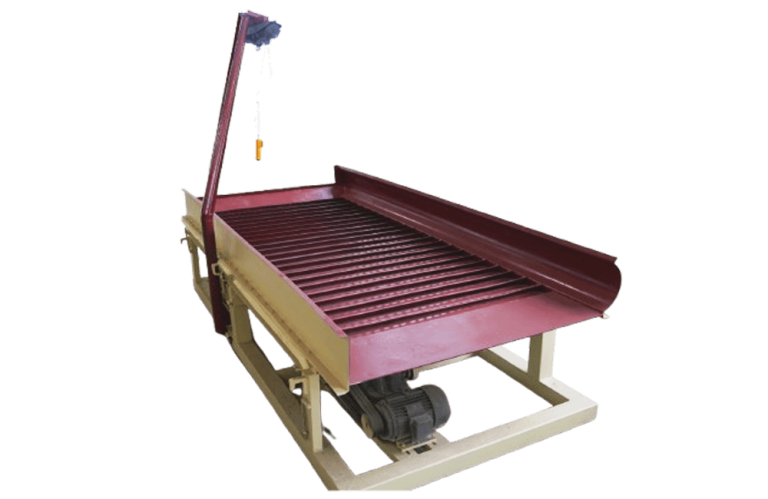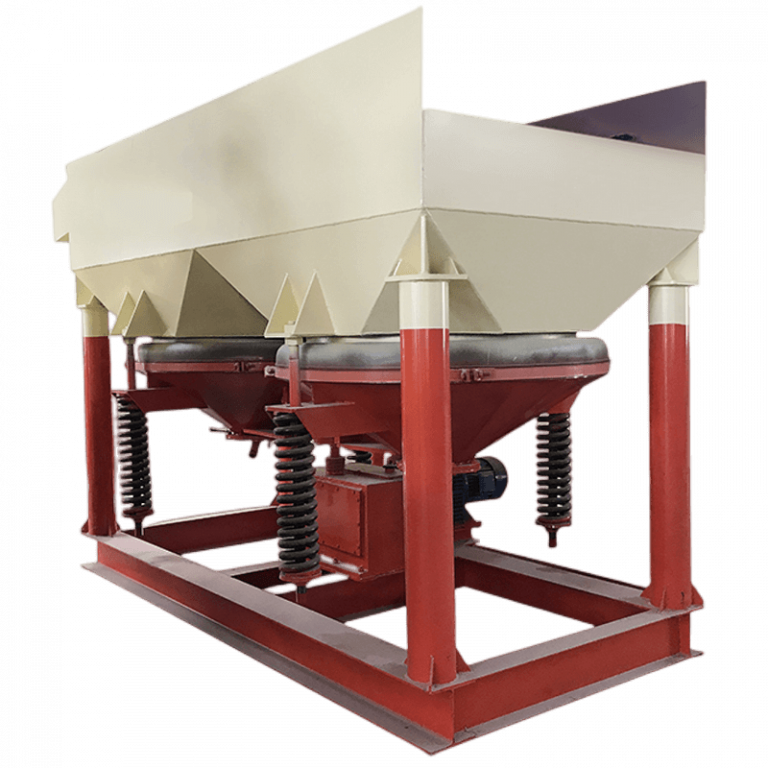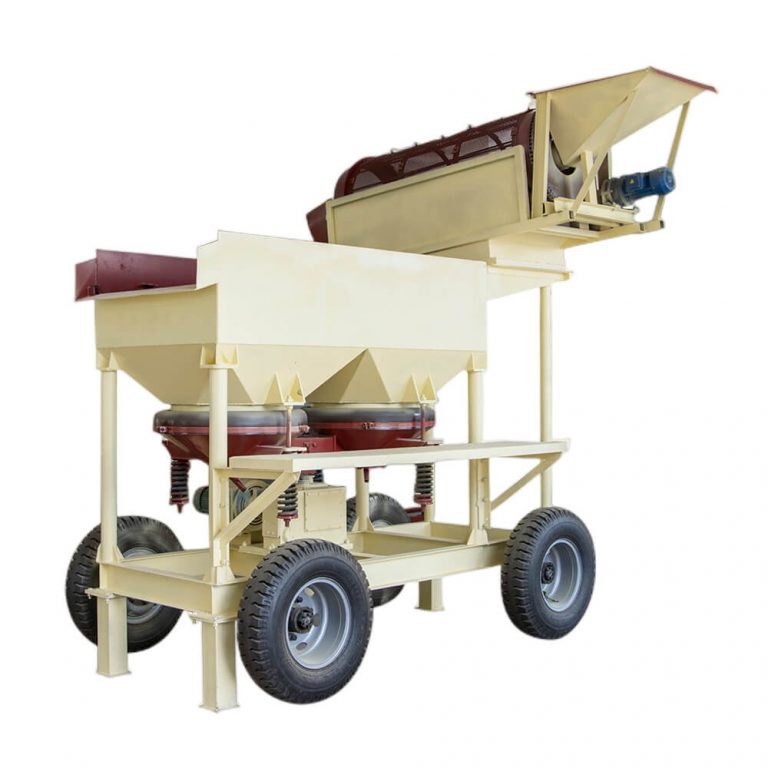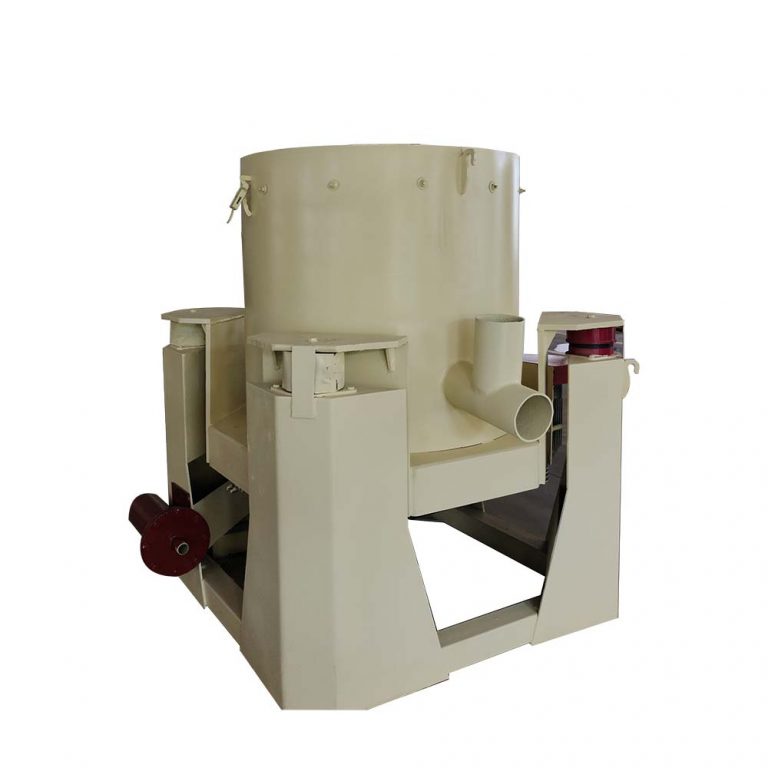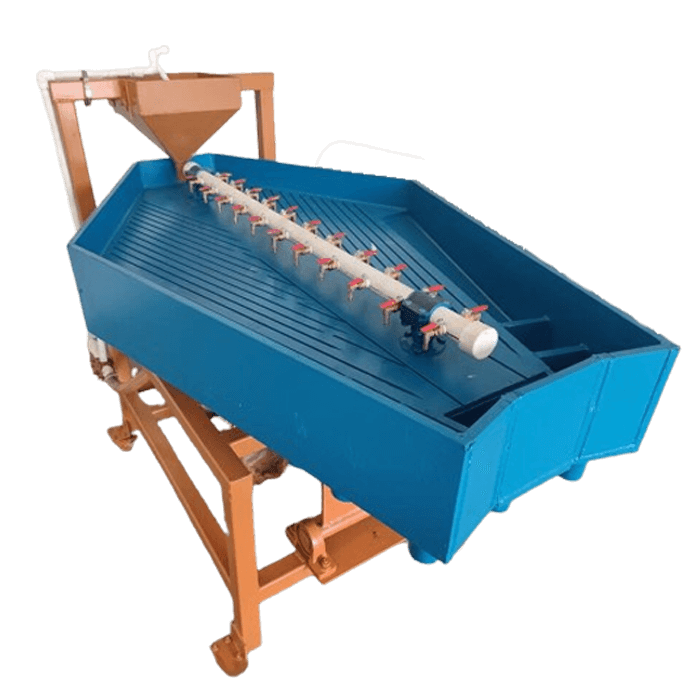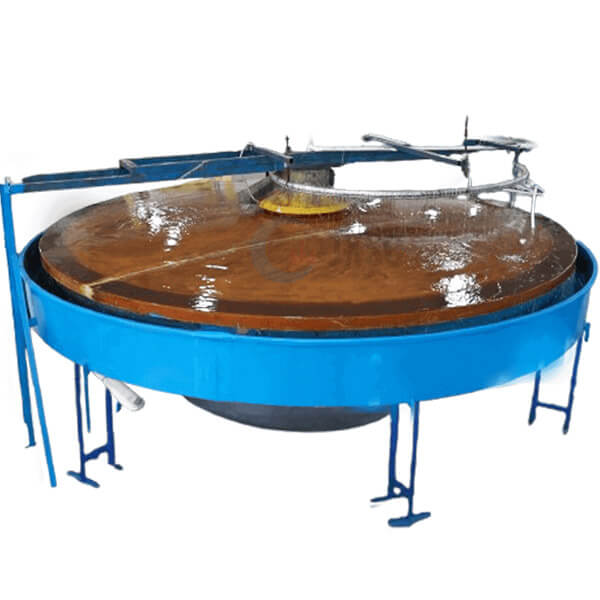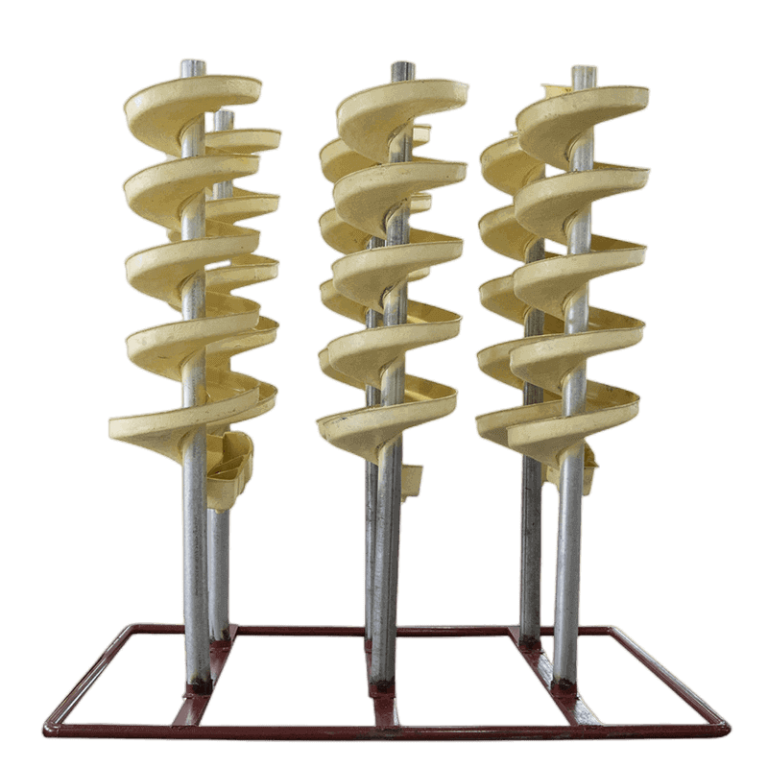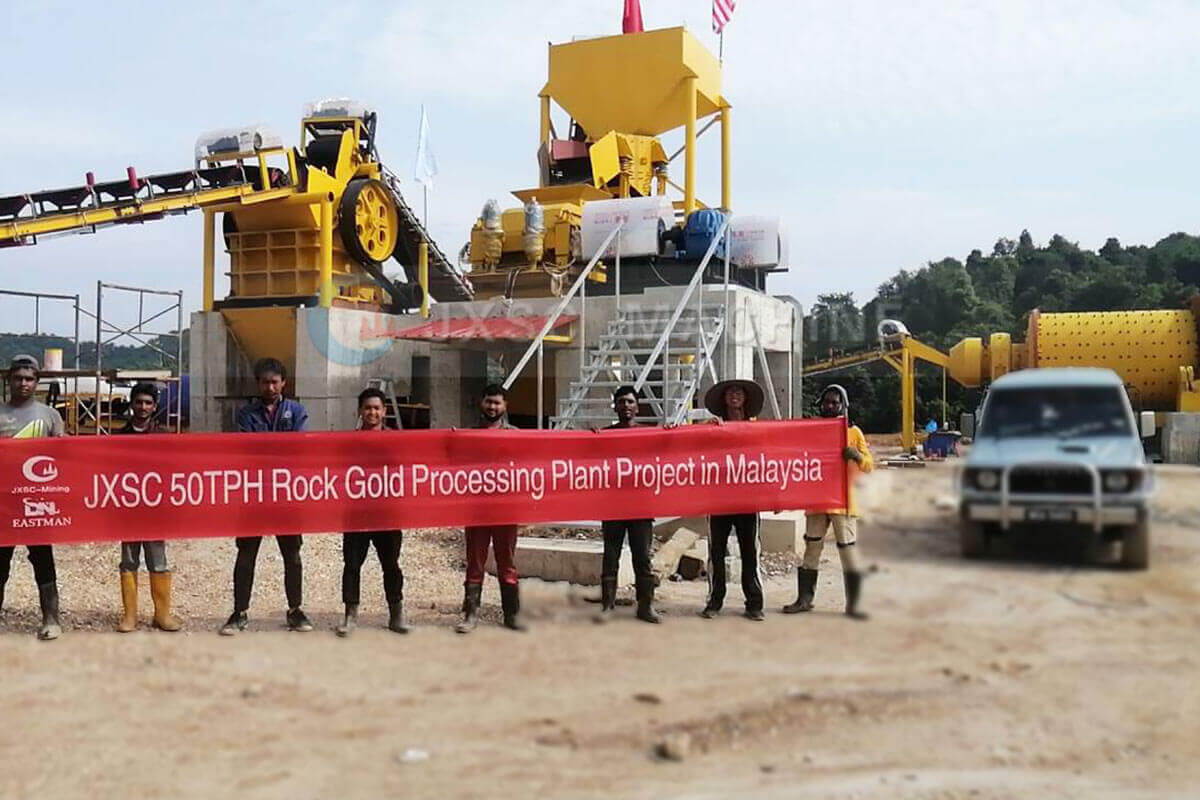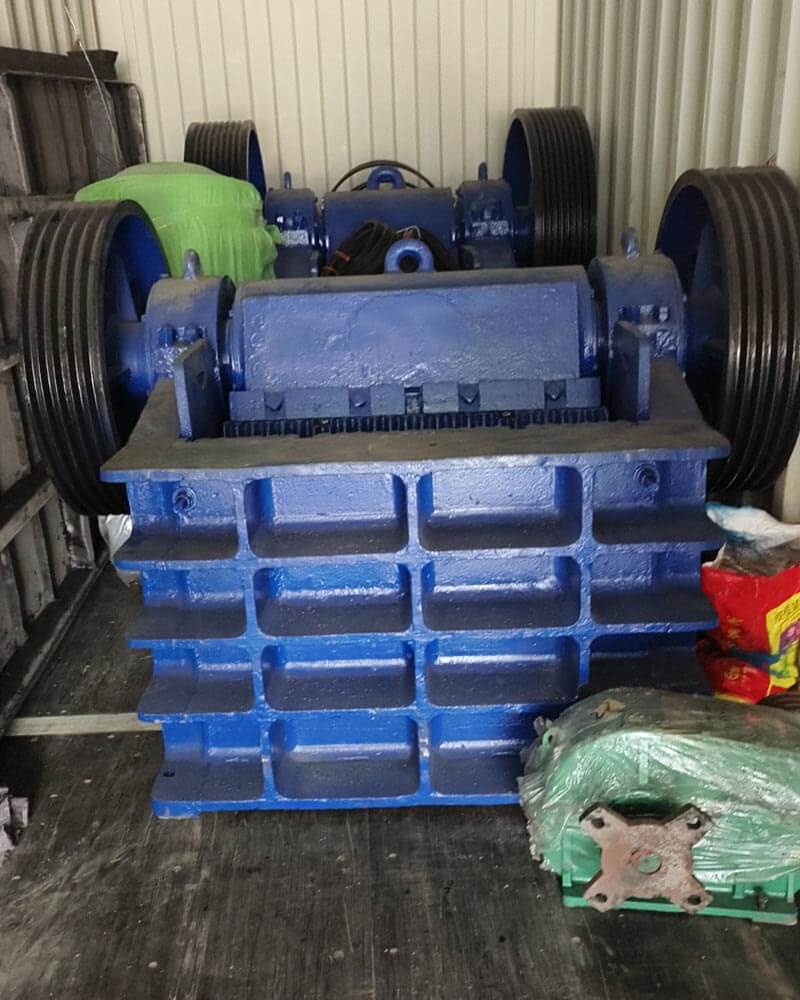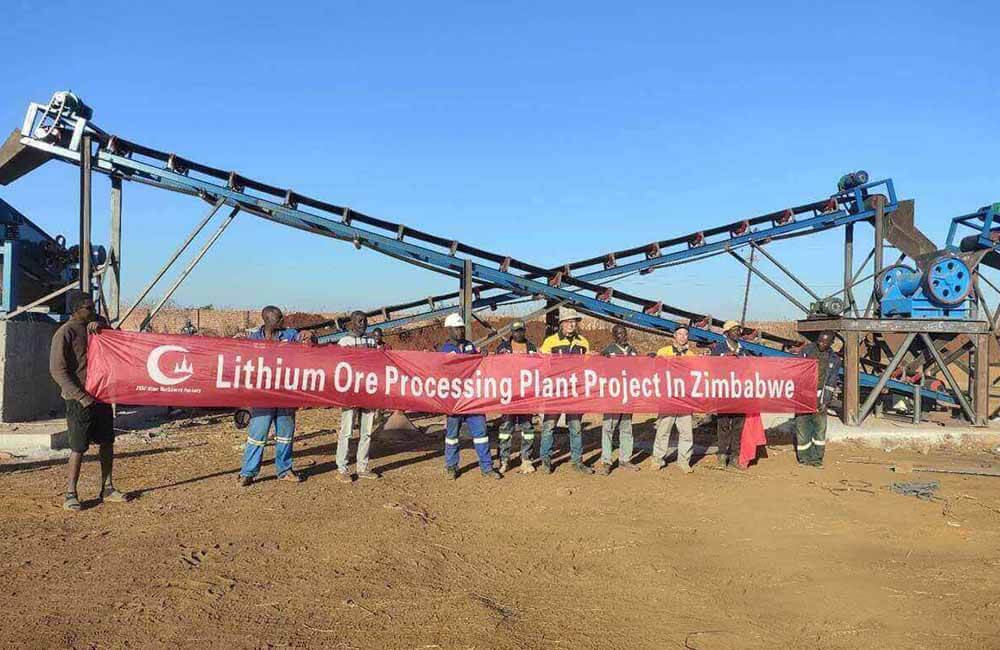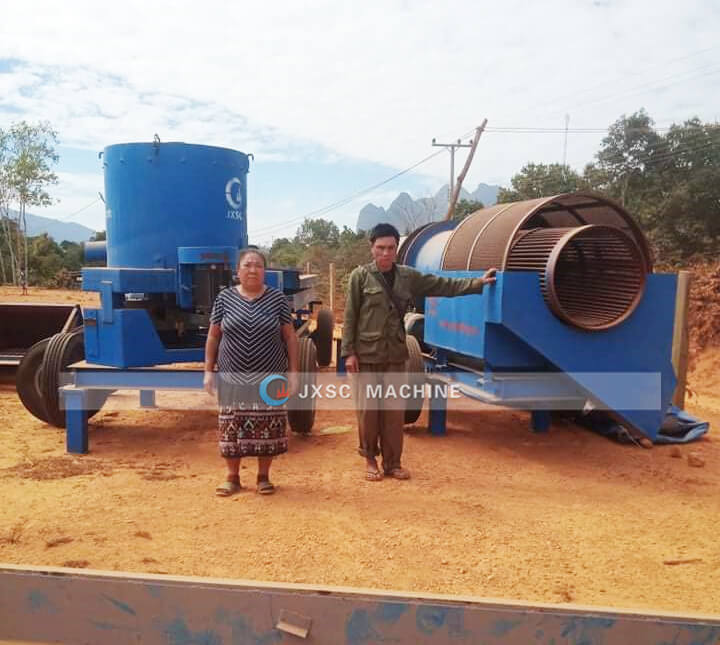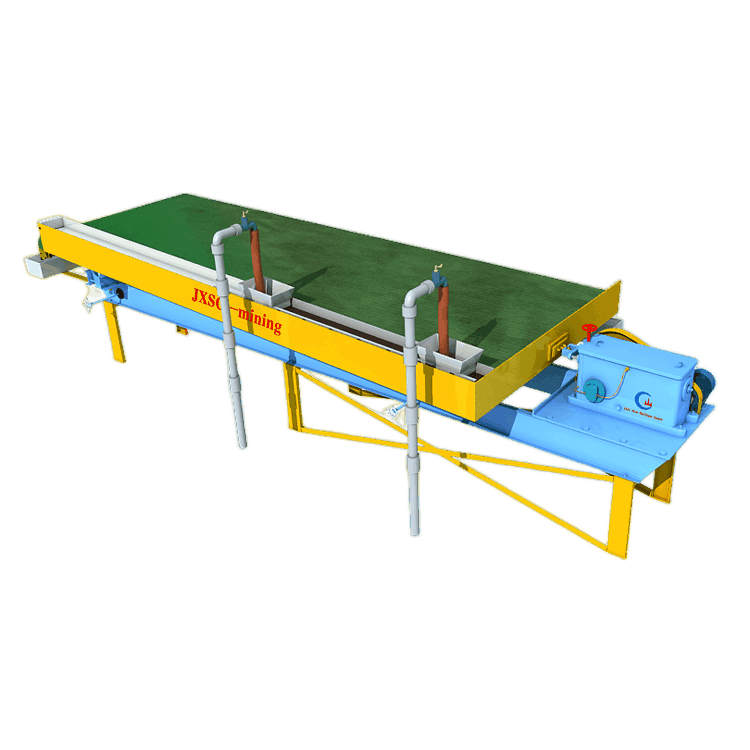
Shaking Table
Capacity: 10-20 t/d, Some model max capacity up to 60 t/d
Application: Tin, tungsten, gold, silver, lead, zinc, tantalum, niobium, titanium, manganese, iron ore, coal, etc.
Advantage:
- Lightweight and corrosion-resistant Polypropylene materials feeding chute and collection chute
- High-quality & wear-resisting fiberglass deck
- Heighten steel stand for more convenient feeding
- Protective cover for belt wheel that ensures safe production
Types of shaking table
JXSC manufacturer provides a wide range of popular shaker table types at factory-direct prices for sale. Our shaker tables by deck numbers: single-deck shaker tables, double-deck shaker tables, and multi-deck shaker tables.
1. Small laboratory shaker, table dimensions: 1100*500*430mm.
2. Standard shaker, table dimensions: 2100*1050*850mm.
3. 6S small shaker, table dimensions: 4500*1850*1560mm.
The 6S shaker is suitable for processing coarse sand (placer gold, chromite, ilmenite), fine sand separation (tungsten, tin, tantalum-niobium beneficiation), and ore sludge treatment, depending on the feed size. All shakers feature high efficiency, low energy consumption, and intelligent technology, and can be customized upon request.
Introduction of shaking table
The shaking tables (gravimetric tables, concentrating table, shaker tables, gold shaking table) are the most widely used and efficient gravity separation equipment for high-precision enrichment and purification of various fine-grained ores. It is widely used to beneficiate rare metals and precious metal ores, such as gold, copper, tin, tantalum, niobium, iron, manganese, chromium, etc. It can be used for roughing, concentrating, scavenging separation, and other mineral processing stages. The shaking table can produce multiple grades of products at one time, including high-grade concentrate, secondary concentrate, middling, and tailings at one time, and is an important ore separation equipment. The mining shaker table with its irreplaceable sorting accuracy and operational flexibility, has become the “standard balance” in the gravity separation process, playing a key role in the final separation of precious metals and high-value minerals.
working principle of shaking table
The ore are fed from the ore feeding trough at the corner of the shaking table bed, and the horizontal flushing water is supplied from the feeding trough. Mainly on an inclined bed surface, with the help of the combined action of symmetrical reciprocating motion of mechanical stone slabs and thin-layer inclined plane water flow. The mineral particles on the bed surface according to specific gravity and water flow impulse so that the minerals are sorted according to different densities. Finally, the ore particles with different specific gravity and particle sizes gradually flow down in a fan shape along their respective directions of movement. It’s discharged from other areas on the concentrate end and tailings side of the shaking table, respectively, thus forming concentrate, middlings and tailings.
Why Choose JXSC shaking table
Features & advantages of shaking table
- It is often connected with gold trommel scrubber, trommel screen, centrifuge concentrator, sluice box and other beneficiation equipment, and is used in alluvial gold processing plants.
- High enrichment ratio, good separation efficiency, easy care, easy adjustment, simple operation, and it can obtain the final concentrate and tailings at one time.
- The bed surface is flat, has good corrosion resistance, is durable, not easily deform, has a long service life, and does not need to be replaced frequently.
- The separation zone is clearly visible (the boundary between concentrate and tailings is obvious), which facilitates real-time adjustment of process parameters.
- Pure physical separation, no chemical pollution, wastewater can be 100% recycled, environmentally friendly, and economical equipment.
- Easy installation, simple operation, low cost, high cost performance, good sorting performance and stable indicators.
models & specifications
Deck type | Unit | Coarse sand | Fine sand | Slime Deck | Three different kinds of decks are available | |||
Beneficiation Area | m2 | 7.6 | 7.6 | 7.6 | 4.08 | 1.95 | 0.5 | |
Deck Size | Length | mm | 4450 | 4450 | 4450 | 3000 | 2100 | 1100 |
transmission end width | mm | 1855 | 1855 | 1855 | 1320 | 1050 | 500 | |
Concentrate end width | mm | 1546 | 1546 | 1546 | 1100 | 850 | 430 | |
Maximum Feeding Size | mm | 2 | 0.5 | 0.15 | 0.1-2 | 0.074-2 | 0.074-2 | |
Feeding Amount | t/d | 30-60 | 10-20 | 15-25 | 0.4-1.5t/h | 0.3-0.8t/h | 0.05-0.2t/h | |
Process Capcity | t/h | 1.5-2 | 0.8-1.5 | 0.5-0.8 | 0.4-1.5 | 0.3-0.8 | 0.05-0.2 | |
Feeding Density | % | 25-30 | 20-25 | 15-25 | 10-30 | |||
Stroke | mm | 16-22 | 11-16 | 8-16 | 6-30 | 12-28 | 9-17 | |
Frequency | f | 45-48 | 18-53 | 50-57 | 210-320 | 250-450 | 280-460 | |
Water added | t/d | 80-150 | 30-60 | 10-17 | 0.3-1.5t/h | 0.2-1t/h | 0.1-0.5t/h | |
Transverse slope of Deck | / | 2° 30-4° 30 | 1° 30-3° 30 | 1° -2° | 0 -10° | 0 -8° | 0 -10° | |
Longitudinal slope of Deck | / | 1.4 | 0.92 | —— | —— | —— | —— | |
Cross-section Shape of Deck | rectangular | saw tooth | triangle | Avaliable rectangular, saw tooth, triangle | ||||
Motor Power | KW | 1.1 | 1.1 | 1.1 | 1.1 | 1.1 | 1.1 | |
Contact Us Now
Ask us about mineral processing configuration and equipment quote! (No job, No investment)
Notice:
- We only provide mineral processing equipment and solutions; not buy and sell minerals/ ores/ materials.
- We do not recruit, don’t offer jobs, and are not interested in investments or partnerships.
- We value your privacy and keep your information safe.
